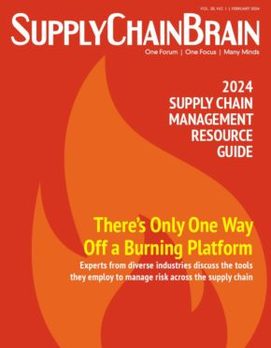
Think Tank
How Contracts Can Insulate Life Sciences Companies From Supply Chain Strain

Photo: iStock.com/Prostock-Studio
More than three years out from the initial supply chain shocks caused by COVID-19, many life sciences companies are still struggling to find stability. Some are even grappling with greater vulnerability in 2023 than in 2020.
In the face of this strain, organizations need to draw on the tools and protections in their supplier contracts to maintain continuity and minimize disruption.
During the first wave of supply chain snags in 2020, life sciences companies (along with virtually every other industry) found themselves unprepared for disruptions on both a big-picture and granular level. At the macro scale, many were too dependent on just one or two suppliers, creating a chokepoint that could easily disrupt operations.
Adding to the disruption was the critical role that China plays in the global pharmaceutical ecosystem. The number of facilities in China supplying active pharmaceutical ingredients (APIs) has more than doubled since 2010, to 13% of those serving the U.S. market, with China producing and exporting around 40% of APIs sent out to the world.
The other, more granular problem was that companies failed to assess their contractual rights and obligations with their suppliers, either from a delivery and mitigation perspective or from a self-help remedy view. As a result, they found themselves without alternatives in place, and unsure of their options at the first sign of trouble.
Many companies’ existing contract management practices did not enable them to quickly identify the terms and conditions that would be triggered by the supply chain disruption. Consequently, while many teams found that they needed to update their standard terms and conditions to better insulate against this sort of event, they also found that they needed to update their processes, to enable quicker reporting on the metadata and clauses that trigger self-help and termination rights, or offer ways to postpone a party's obligations such as “impossibility and “force majeure.”
Today, the challenges are largely the same. While some companies attempted to implement or update their contract lifecycle management (CLM) technology in the wake of the pandemic, many of the projects that began during that period remain in the implementation phase.
What’s more, market conditions have changed. Businesses were happy to spend money hand over fist in 2021 when interest rates were near zero, but that posture has changed. Budgets have tightened. With economic uncertainty looming, some companies are asking: Do we really need to spend several million dollars implementing a new CLM tool? Should we be spending that money somewhere else?
The disruptions first experienced three years ago haven’t disappeared; they’ve compounded. And although healthcare and life sciences companies have proven resilient against the strain, they were understandably rattled by the prospect of yet another COVID wave in China earlier this year.
With so many external factors at play, there's no way to completely eliminate supply chain vulnerabilities. Over a given 10-year period, the likelihood of supply chain disruptions still represents a potential loss of 25% of EBITA. However, supply chain contracts contain legal frameworks allowing a company to address disruptions, so taking the following practical steps related to contracting can have a huge impact on your business:
Know what’s in your contracts (and build practices for easy access). What happens when a supplier fails to deliver? It’s a question many companies have been forced to ask in recent years, and one that has all too often proved difficult to answer promptly.
Ask yourself: do your practices surrounding the way you collect data, and the way you manage your contract obligations post-execution, enable you to quickly step into those contracts and gather the necessary data? If you're not getting what you need, what are your rights? What can you do? Where can you go? If you’re terminating, what are your termination rights and obligations?
Updating your standard terms and conditions may well be useful, but the real difference maker will be accessibility. You don’t know what you don’t know, and in moments where a quick response is vital, questions are costly.
Consider implementing self-help rights. Clauses that warrant self-help or stepping-in rights are being implemented into contracts far more frequently now compared with five years ago. And it’s not hard to see why: These kinds of self-help remedies essentially say that if a manufacturer can't supply what’s needed, you have a right to step in and figure out how to get it, regardless of terms and conditions.
These clauses can also help hold suppliers accountable for your increased costs if the only alternative is a more expensive option, so they insulate your organization from disruption on multiple levels.
Rethink your procurement strategy. Most companies quickly realized they needed to diversify their supply base in 2020. Since the pandemic, the Senate has also focused on curbing US reliance on China for medication and medical devices with legislation designed to diversify supply chains – especially in the medical and pharmaceutical fields. Despite identifying this priority, many companies have yet to take action, focusing instead on increasing inventory.
One notable exception is raw materials, which have seen a rise in the diversification of material supply. This could be a positive sign for healthcare and life sciences companies who struggled to source vital materials like precious metals during the first wave of COVID.
If you’ve yet to assess your supplier relationships and identify where you might be overly reliant on just one or two suppliers, now is the time.
Be intentional with technology. The realization that they couldn’t easily access contract data when they needed it inspired many companies to invest in CLM. However, when that investment only extends to tech and not the entire contracting environment, it won’t solve any problems. It may actually make them worse.
Technology is a powerful enabler if you’ve also considered things like how you're putting contracts in place; the form of those contracts; updating your templates to reflect things like self-help and stepping-in rights; and looking at your business continuity, disaster recovery, timely delivery, notice obligations, mitigation plans and more. The CLM environment extends far beyond a tech tool, and technology can only drive real value when it’s considered as part of that larger environment from intake to storage.
That said, there are some exciting ways that artificial intelligence and machine learning can help future proof your supply chain contracts; in fact, they’re powerful tools for overall supply chain management. For example, implementing blockchain technology can help you track and understand volumes by providing visibility into where you’re sourcing things, where they’re going and where they are now.
Start at the beginning. Before you invest in a new tool or decide to update your standard terms and conditions, take a step back and establish the current state of your supply chain contracts. With a complete view of where you are now, you can identify gaps and take the necessary steps to improve.
The reality is life sciences companies may continue to face supply chain disruptions, but the right contracting strategy can minimize instability and drive continuity.
Karl Dorwart is the vice president and head of healthcare, life sciences and consumer staples at Factor.






